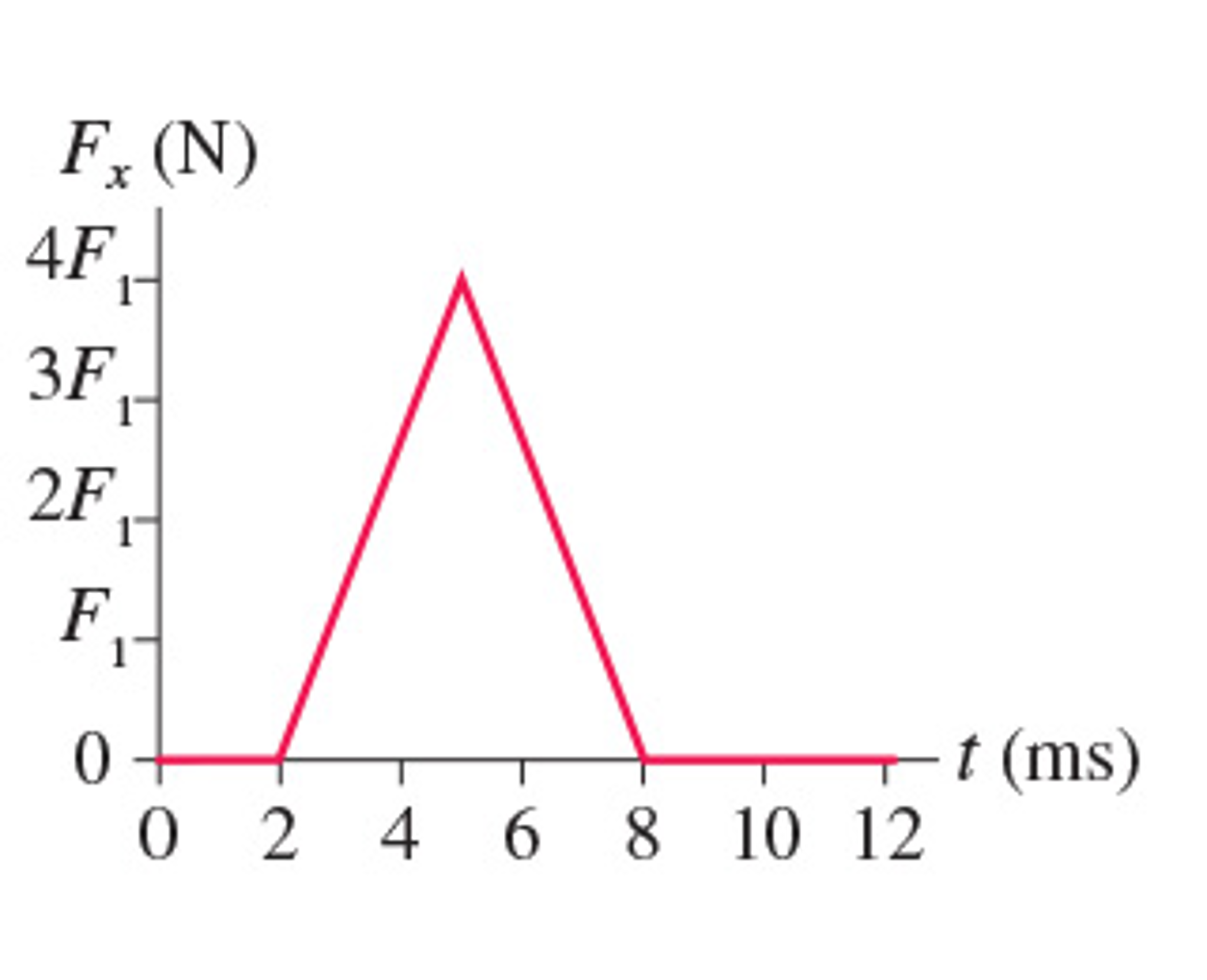

The only difference is that now the body reaches $10$ m/s half a second after the force was first applied.Īs you can see from the graphs the impulse in the same and so is the final state, speed is $10$ m/s but as the time over which the force acts decreases so the time taken to reach the final state. The impulse is the same ($10$ Ns), the change in momentum is the same ($10$ Ns) and so is the final speed ($10$ m/s).

Now apply a force of $20$ N on the body for $\frac 1 2 $ seconds. However it does not reach that speed until one second after the froce was first applied. The impulse is $10 \times 1 = 10$ Ns and as this is equal to the change in momentum of the body the bodies final speed is $10$ m/s. Suppose a mass of $1$ kg, starting from rest, is subjected to a force of $10$ newtons for $1$ second. Now often it is the case that one is interested in what happens before and after a collision but one is not interested in what happens during the collision particularly if the time during which the collision occurs is much less than the times scale before and after the collision.
Support Reactions - Equilibrium - Static equilibrium is achieved when the resultant force and resultant moment equals to zero.As freecharly stated in his post, impulsive force is defined to be the force which acts for an infinitesimally short interval of time and yet is responsible for a finite change in momentum of the system on which the impulsive force is applied.Īs implied from Newton's Second Law of Motion, impulse is defined to be $$\textrm \Rightarrow \Delta p = F \Delta t$ ie it is something to do with change of momentum of a body. Rolling Resistance - Rolling friction and rolling resistance. Projectile Range - Calculate the range of a projectile - a motion in two dimensions. 
Kinetic Energy - Energy possessed by an object's motion is kinetic energy.Jet Propulsion - Calculate the propulsive discharge force or thrust induced by an incompressible jet flow.
 Impact Force - Impact forces acting on falling objects hitting the ground, cars crashing and similar cases. Formulas of Motion - Linear and Circular - Linear and angular (rotation) acceleration, velocity, speed and distance. Force Ratio - The force ratio is the load force versus the effort force. Flywheels - Kinetic Energy - The kinetic energy stored in flywheels - the moment of inertia. Speed and Time - Calculator and Chart - Velocity plotted in time used diagram. Conservation of Momentum - The momentum of a body is the product of its mass and velocity - recoil calculator. Car - Required Power and Torque - Power, torque, efficiency and wheel force acting on a car. Angular Motion - Power and Torque - Angular velocity and acceleration vs. Mechanics - Forces, acceleration, displacement, vectors, motion, momentum, energy of objects and more. Dynamics - Motion - velocity and acceleration, forces and torque. Then the velocity of the car after 10 s can be calculated as The impulse - or change in momentum - can be calculated I = impulse (N s) Example - resulting Velocity after an Acting ForceĪ force 1000 N is acting on a car with mass 1000 kg in 10 second. The impulse is equal to the change of momentum caused by the impulsive force and can be expressed as The product of the impulsive force and the time it acts is called the impulse. (1) can alternatively be expressed asĬhange in momentum is force times acting time.įorces that act for a very short time are called impulse forces. According to Newton's Second Law of Motion - force can be expressed asĭM = change of momentum (kg m/s, lb ft/s)Įq.
Impact Force - Impact forces acting on falling objects hitting the ground, cars crashing and similar cases. Formulas of Motion - Linear and Circular - Linear and angular (rotation) acceleration, velocity, speed and distance. Force Ratio - The force ratio is the load force versus the effort force. Flywheels - Kinetic Energy - The kinetic energy stored in flywheels - the moment of inertia. Speed and Time - Calculator and Chart - Velocity plotted in time used diagram. Conservation of Momentum - The momentum of a body is the product of its mass and velocity - recoil calculator. Car - Required Power and Torque - Power, torque, efficiency and wheel force acting on a car. Angular Motion - Power and Torque - Angular velocity and acceleration vs. Mechanics - Forces, acceleration, displacement, vectors, motion, momentum, energy of objects and more. Dynamics - Motion - velocity and acceleration, forces and torque. Then the velocity of the car after 10 s can be calculated as The impulse - or change in momentum - can be calculated I = impulse (N s) Example - resulting Velocity after an Acting ForceĪ force 1000 N is acting on a car with mass 1000 kg in 10 second. The impulse is equal to the change of momentum caused by the impulsive force and can be expressed as The product of the impulsive force and the time it acts is called the impulse. (1) can alternatively be expressed asĬhange in momentum is force times acting time.įorces that act for a very short time are called impulse forces. According to Newton's Second Law of Motion - force can be expressed asĭM = change of momentum (kg m/s, lb ft/s)Įq.








 0 kommentar(er)
0 kommentar(er)
